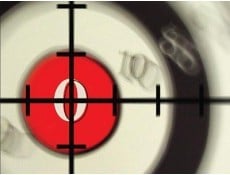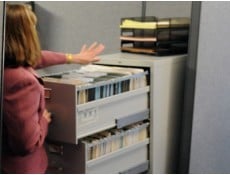
August 6, 2014
Are Office Safety Programs a Waste of Time and Money?


August 6, 2014

Big companies are expanding their safety programs to their office settings – so says a recent, nationally published article. The stated goal: Get everyone thinking about safety. Is this really going to help?
The other day, a colleague forwarded to me a link to a Wall Street Journal article, “Safety cops patrol the office for high heels.”
The gist of it: Safety is no longer just for the manufacturing plants, oil fields, slaughter houses, construction sites, warehouses, etc. Joe and Jane Officeworker are also now expected to remember that “Safety is No. 1.”
The piece states:
“Now field-inspired safety protocols are migrating to the office, where hazards include dripping umbrellas, the height of high heels and hot cups of coffee.”
We’ll say upfront that we don’t mean to make light of potential hazards caused by people shaking off their rain-soaked umbrellas indoors over a tile floor. We know it’s a recipe for a serious injury.
What’s interesting about the article is that some of the large companies mentioned have had their fair share of serious, multiple-fatality incidents just in the last decade.
So companies that had significant safety failures are now working so hard on safety that they’re bringing their programs into office settings?
Yep.
Does this seem like too much of a good thing to you? If so, you’re not alone. In fact, a federal safety agency has warned about this syndrome more than once.
A U.S. Chemical Safety Board investigation of the Deepwater Horizon disaster that killed 11 workers chastised BP and its business partner Transocean for focusing on just this sort of thing. The CSB report said the two companies were sweating the small stuff while major process safety hazards were going unchecked.
On the day of the explosion in 2010, BP and Transocean had held an event to praise workers for a low rate of personal injuries. We’re talking hours before the fatal explosion.
And it’s not like no one warned BP about this previously. At its Texas City refinery where 15 workers were killed in an explosion in 2005, contract workers had just returned to temporary trailers at the plant after attending a celebratory lunch commending an excellent personal injury record. Shortly after the lunch, the explosion occurred, killing workers in the trailers.
BP isn’t mentioned in the Wall Street Journal article, but other large companies with recent safety disasters are:
The WSJ article also points out not everyone is impressed with these companies’ office safety programs. The director of health and safety for the United Steelworkers called these types of office programs “just distraction.”
It seems some employees might not be taking the programs completely seriously. One office employee who is required to find safety hazards on a regular basis wrote that to mitigate choking hazards during lunch she would “take small bites and avoid bread.”
Safety programs have finite resources. So, just as in the BP cases, the question becomes this: Are those resources being used wisely by spending them on office safety programs?
What do you think? Have you experienced situations in which a company’s safety focus was misdirected? Let us know in the comments.
This Article Retrieved from Safetynewsalert.com


